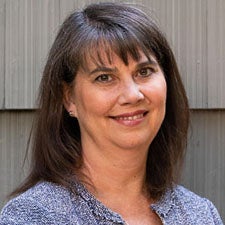View the Report
Jump to All Downloads & LinksKey Takeaways
- Graduate medical education – also known as GME – is critical to addressing California’s health workforce shortage and ensuring the physician workforce can meet the health care needs of California today and in the future.
- Three in four physicians who complete residency training in California remain in the state to practice medicine, and physicians are also more likely to practice medicine near their residency program.
- While the majority of graduate medical education funding comes from federal sources, state investments in GME are important because state dollars can be used to support the implementation costs of new residency programs, supplement funding for existing programs, and expand programs ineligible for federal support.
California’s population continues to change, age, and rapidly diversify, and the need for a representative, well-trained health care workforce has never been more critical. Graduate medical education — also known as GME — plays a vital role in shaping health care delivery in California.
Over the past decade, California has seen a consistent increase in residency programs across the state, and this growth indicates a concerted effort to expand the physician pipeline. The following reports provide data and a landscape of graduate medical education program expansion, funding, and impact on physician training and distribution across the state.
- Explainer: The Role of State and Federal Funding for Graduate Medical Education in California
- Graduate Medical Education Expansion in California: A Progress Update
These two companion reports will help policy, education, and health leaders come together to accomplish these goals:
- Understand how GME shapes the state’s physician pipeline. Graduate medical education is the final step in physician training, and it’s crucial for developing a robust supply of doctors who will practice in California.
- Gain clarity on the GME funding system, challenges, and risks. Funding to support graduate medical education is an intricate web of federal, state, and private sources.
- Explore how GME expansion efforts affect regional disparities. California faces significant physician shortages in specific regions, particularly in the the Inland Empire, San Joaquin Valley, and rural northern California.
- Assess progress toward state goals to expand residency programs and positions. In 2019, the California Future Health Workforce Commission set ambitious targets for expanding primary care and psychiatry residencies.
By understanding the current landscape of graduate medical education, policy, education, and health leaders can work together to build a stronger, more equitable health care workforce that serves all Californians.
Authors & Contributors
Alexandra Ament
Consultant

Diane Rittenhouse
Diane Rittenhouse, MD, MPH, is a senior fellow at Mathematica and a professor of family medicine and health policy at University of California, San Francisco. She is nationally recognized for her research on innovations in primary care organization, delivery, finance and workforce — and her ability to translate this research into policy. She has led many studies that have contributed to health care reform discussions.
She was principal investigator for the evaluation of federal efforts to restore, expand, and improve primary care services in greater New Orleans following Hurricane Katrina and co-investigator on multiple large national studies of physician practices. She is principal investigator for the transitional program office to expand graduate medical education in California. She is also principal investigator for a qualitative study of high-performing physician-owned private practices.
Rittenhouse has published in the Journal of the American Medical Association and the New England Journal of Medicine and has been cited in The New York Times, the Wall Street Journal, the Los Angeles Times, and USA Today.
She received her MD from the University of California, Davis, and her MPH with an emphasis in health policy and management from the UC-Berkeley. Before her medical training, she worked for the California Statewide Office of Health Planning and Development and for the deputy assistant secretary for health in Washington, DC.
Kristin Schumacher
Aster Policy Analytics





